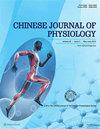Epoxyeicosatrienoic acids and soluble epoxide hydrolase in physiology and diseases of the central nervous system
IF 1.6
4区 医学
Q4 PHYSIOLOGY
引用次数: 8
Abstract
Epoxyeicosatrienoic acids (EETs) are fatty acid signaling molecules synthesized by cytochrome P450 epoxygenases from arachidonic acid. The biological activity of EETs is terminated when being metabolized by soluble epoxide hydrolase (sEH), a process that serves as a key regulator of tissue EETs levels. EETs act through several signaling pathways to mediate various beneficial effects, including anti-inflammation, anti-apoptosis, and anti-oxidation with relieve of endoplasmic reticulum stress, thereby sEH has become a potential therapeutic target in cardiovascular disease and cancer therapy. Enzymes for EET biosynthesis and metabolism are both widely detected in both neuron and glial cells in the central nervous system (CNS). Recent studies discovered that astrocyte-derived EETs not only mediate neurovascular coupling and neuronal excitability by maintaining glutamate homeostasis but also glia-dependent neuroprotection. Genetic ablation as well as pharmacologic inhibition of sEH has greatly helped to elucidate the physiologic actions of EETs, and maintaining or elevating brain EETs level has been demonstrated beneficial effects in CNS disease models. Here, we review the literature regarding the studies on the bioactivity of EETs and their metabolic enzyme sEH with special attention paid to their action mechanisms in the CNS, including their modulation of neuronal activity, attenuation of neuroinflammation, regulation of cerebral blood flow, and improvement of neuronal and glial cells survival. We further reviewed the recent advance on the potential application of sEH inhibition for treating cerebrovascular disease, epilepsy, and pain disorder.环氧二十碳三烯酸和可溶性环氧化物水解酶在中枢神经系统生理和疾病中的作用
环氧二十碳三烯酸(EETs)是由花生四烯酸的细胞色素P450环氧合酶合成的脂肪酸信号分子。EETs的生物活性在被可溶性环氧化物水解酶(sEH)代谢时终止,这一过程是组织EETs水平的关键调节因子。EET通过多种信号通路介导多种有益作用,包括抗炎、抗凋亡和抗氧化,缓解内质网应激,因此sEH已成为心血管疾病和癌症治疗的潜在治疗靶点。EET生物合成和代谢的酶在中枢神经系统(CNS)的神经元和神经胶质细胞中都被广泛检测到。最近的研究发现,星形胶质细胞衍生的EET不仅通过维持谷氨酸稳态介导神经血管耦合和神经元兴奋性,而且还具有神经胶质依赖性的神经保护作用。sEH的基因消融和药理学抑制极大地有助于阐明EET的生理作用,在中枢神经系统疾病模型中,维持或提高脑EET水平已被证明是有益的。在此,我们回顾了有关EETs及其代谢酶sEH的生物活性研究的文献,特别关注它们在中枢神经系统中的作用机制,包括它们对神经元活性的调节、对神经炎症的减轻、对脑血流量的调节以及对神经元和神经胶质细胞存活的改善。我们进一步综述了sEH抑制在治疗脑血管疾病、癫痫和疼痛障碍方面的潜在应用的最新进展。
本文章由计算机程序翻译,如有差异,请以英文原文为准。
求助全文
约1分钟内获得全文
求助全文
来源期刊
CiteScore
2.30
自引率
5.60%
发文量
36
审稿时长
6-12 weeks
期刊介绍:
Chinese Journal of Physiology is a multidisciplinary open access journal.
Chinese Journal of Physiology (CJP) publishes high quality original research papers in physiology and pathophysiology by authors all over the world. CJP welcomes submitted research papers in all aspects of physiology science in the molecular, cellular, tissue and systemic levels. Multidisciplinary sciences with a focus to understand the role of physiology in health and disease are also encouraged.
Chinese Journal of Physiology accepts fourfold article types: Original Article, Review Article (Mini-Review included), Short Communication, and Editorial. There is no cost for readers to access the full-text contents of publications.

 求助内容:
求助内容: 应助结果提醒方式:
应助结果提醒方式:


